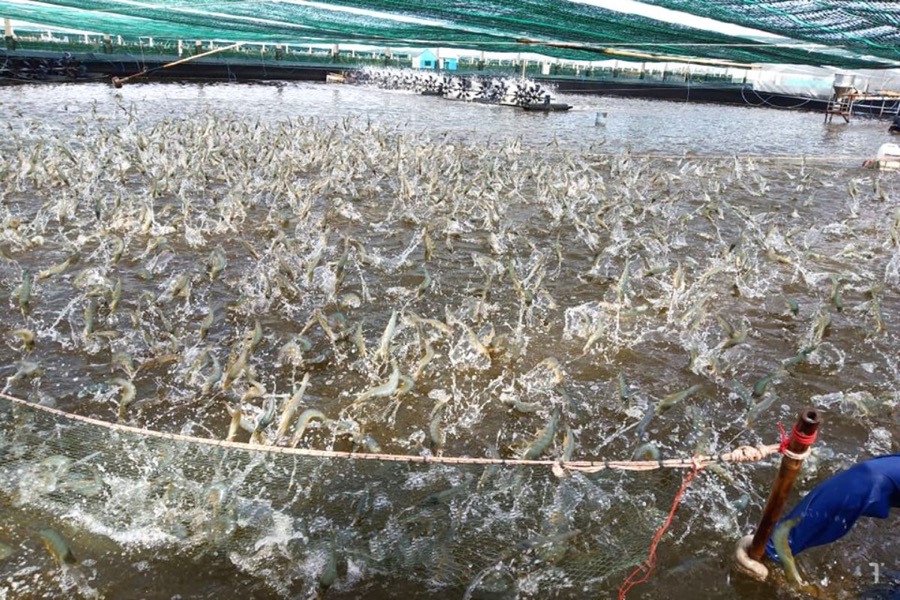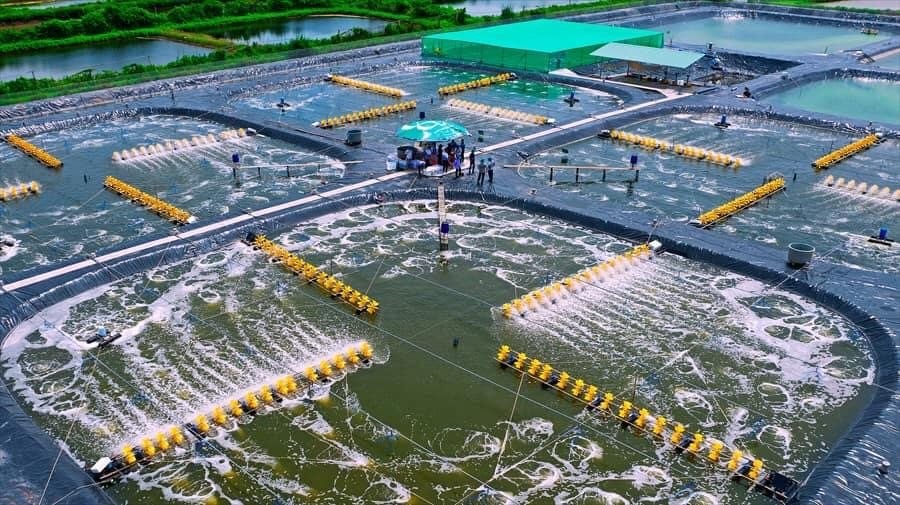Shrimp farming is a key economic sector in Vietnam, contributing significantly to the national seafood export turnover. However, alongside the rapid development of intensive and super-intensive farming models is the challenge of environmental pollution caused by wastewater generated during farming. Large volumes of organic matter, solids, pathogenic microorganisms, and pond treatment chemicals, if not strictly controlled, will severely affect surface water quality and disrupt the coastal ecosystem. The article below will help you better understand the characteristics of shrimp pond wastewater, the main pollutants, and effective treatment solutions.
1. Introduction to Shrimp Farming Wastewater
Shrimp farming plays a crucial role in Vietnam's fisheries sector, greatly contributing to export revenue and creating jobs for millions of rural workers. With a long coastline and favorable natural conditions, Vietnam has become one of the world's leading shrimp exporters, particularly for black tiger shrimp and white-leg shrimp.
Despite its high economic value, shrimp farming activities also generate large volumes of wastewater containing organic matter, pathogenic microorganisms, antibiotic residues, and pond treatment chemicals. If not properly collected and treated, wastewater from farming ponds can severely pollute surface water sources, harm ecosystems, and cause environmental imbalance—especially in areas with high farming density.

Wastewater from shrimp ponds causes serious pollution to water sources.
2. Pollutant Components in Shrimp Farming Wastewater
Wastewater from shrimp farming activities contains a complex mix of pollutants, including solids, organic substances, nutrients, microorganisms, and residual chemicals. Below are the main commonly encountered components:
2.1. Physicochemical Indicators
-
TSS (Total Suspended Solids): Includes dead algae, leftover feed, shrimp feces, and decomposed microorganisms, increasing turbidity and reducing light penetration.
-
BOD and COD: Key indicators reflecting organic pollution levels; BOD shows biological oxygen demand, while COD measures the amount of oxygen required to chemically decompose organic matter.
-
Turbidity: Indicates water clarity; high turbidity is associated with high suspended solids, affecting photosynthesis of algae and shrimp growth.
2.2. Nutrient Indicators
-
Nitrogen: Exists as NH₃, NO₂⁻, and NO₃⁻, which are toxic to shrimp if exceeding thresholds, especially ammonia in high pH environments.
-
Phosphorus: Mainly in the form of phosphate (PO₄³⁻), a contributor to eutrophication if uncontrolled.
2.3. Pathogenic Microorganisms
-
Coliform and E. coli: Indicators of fecal contamination, potentially causing intestinal diseases in humans and weakening shrimp immune systems.
2.4. Chemicals and Antibiotics
-
Residual antibiotics: Common treatments like oxytetracycline and enrofloxacin may remain in wastewater, contributing to environmental antibiotic resistance.
-
Pond treatment chemicals: Disinfectants, algaecides, and sterilants may degrade water quality and have long-term environmental impacts if not properly managed.

Pollutants in shrimp pond wastewater when discharged untreated
3. Effective Shrimp Pond Wastewater Treatment Methods
Wastewater from intensive and super-intensive shrimp farming contains high concentrations of organics, nutrients (nitrogen, phosphorus), suspended solids, and may also include antibiotics, pathogens, or biocides. To minimize environmental impacts, current solutions focus on removing excess nutrients, eliminating harmful microorganisms, and stabilizing water quality.
3.1. Industrial-Scale Wastewater Treatment Systems
In this model, wastewater from pond siphoning or water exchange passes through sedimentation filters. It then enters biological treatment tanks, where activated sludge microorganisms decompose organic matter into harmless by-products or biomass. The water is then directed to sedimentation tanks for sludge removal, followed by disinfection before discharge or reuse.
Advantages:
-
High treatment efficiency, fast processing time.
-
Suitable for closed industrial farming systems.
Disadvantages:
-
High investment and operational costs.
-
Requires skilled personnel and technical equipment.
-
Difficult to apply in small-scale or household farming.
3.2. Treatment Using Biological Ponds
A traditional method that utilizes natural ecosystems. Wastewater is led through sedimentation ponds to remove solids, then through biological ponds where microorganisms and aquatic species like tilapia, catfish, clams, or oysters decompose remaining organics.
Advantages:
-
Low cost, easy to implement.
-
Can utilize farming by-products like shrimp shells and leftover feed.
Disadvantages:
-
Requires large land areas.
-
Water output quality may fluctuate with environmental conditions.
-
Longer treatment time compared to industrial systems.
3.3. Biofloc Technology – On-Site Treatment Without Water Exchange
Developed by Prof. Yoram Avnimelech (Israel), this method uses heterotrophic bacteria to treat wastewater within the pond. By adding carbon sources (e.g., molasses), bacteria consume nitrogen and organics, converting them into biomass—thus purifying the water and reducing water exchange needs.
Advantages:
-
Minimizes pollution and enhances biosecurity.
-
Optimizes feed costs, saves water.
-
Reduces overall wastewater, leaving only siphoned bottom water to treat.
Disadvantages:
-
Requires deep knowledge of biology and system operation.
-
High energy demand; requires stable electricity supply.
-
Siphoned pond bottom water still needs further treatment before discharge.
-
Wastewater treatment methods in shrimp farming aligned with current QCVN standards
Treating shrimp farming wastewater is not only a legal obligation but a key factor for sustainable development in the aquaculture sector. Depending on scale and specific conditions, farmers can choose suitable treatment models. Proper application of these methods not only protects the environment but also improves shrimp productivity, quality, and long-term economic efficiency.

